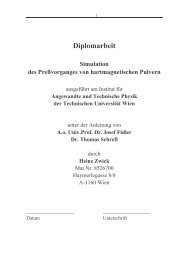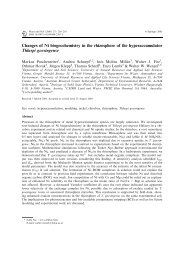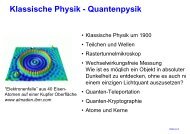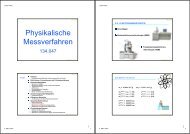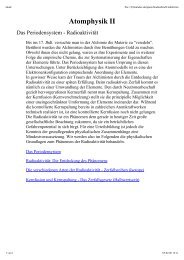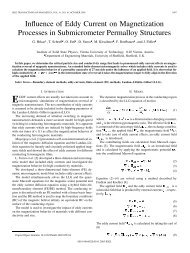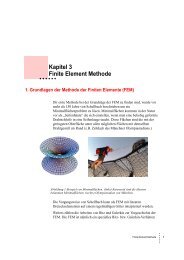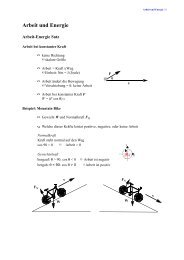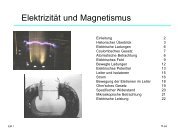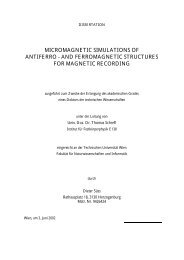Read Back Signals in Magnetic Recording - Research Group Fidler
Read Back Signals in Magnetic Recording - Research Group Fidler
Read Back Signals in Magnetic Recording - Research Group Fidler
Create successful ePaper yourself
Turn your PDF publications into a flip-book with our unique Google optimized e-Paper software.
4.5 Time <strong>in</strong>tegration<br />
Numerical Methods<br />
Us<strong>in</strong>g the LLG equation, the time evolution of the magnetization can be calculated. The<br />
discretization of realistic problems leads to an <strong>in</strong>itial-value problem (4.2) with up to a million<br />
unknowns.<br />
To solve such problems the free solver CVODE is used [29] [30], which offers iterative and<br />
direct multistep methods. Multistep methods make use of the past values of the solution.<br />
For our purposes the iterative backward differentiation formula (BDF) seemed to fit best to<br />
solve our problem, <strong>in</strong> order to achieve fastest convergence times. The nonl<strong>in</strong>ear system is<br />
solved us<strong>in</strong>g a Newton method, which requires only a few iterations. In order to improve the<br />
performance, CVODE allows precondition<strong>in</strong>g. By declar<strong>in</strong>g an estimated Jacobian matrix the<br />
convergence time can be drastically decreased.<br />
CVODE is capable of choos<strong>in</strong>g the time step size automatically. For rapidly chang<strong>in</strong>g<br />
processes a smaller time step is chosen to <strong>in</strong>crease accuracy.<br />
Figure 4.5 schematically shows the complete simulation cycle. First the mesh model and the<br />
material parameters are read. Then the boundary matrices for the FEM/BEM methods for the<br />
stray field and the current field are set up. Afterwards the <strong>in</strong>itial magnetization is read and set,<br />
and the time <strong>in</strong>tegration starts.<br />
CVODE solves the LLG equation, and requests the right hand side of the LLG equation for<br />
certa<strong>in</strong> po<strong>in</strong>ts of time. CVODE passes the actual time and the magnetic polarization J i of<br />
each node to the LLG calculation rout<strong>in</strong>e, which calculates the right hand side of the LLG<br />
equation. All magnetic fields which contribute to the total effective magnetic field H eff are<br />
calculated for each nodal po<strong>in</strong>t. Then the effective field is <strong>in</strong>serted <strong>in</strong> the right hand side of the<br />
LLG equation, which leads to new functions f i of time and magnetic polarization of the i-th<br />
node. These functions are transmitted back to the solver, which decides to modify the<br />
magnetic polarization. If the desired precision is not fulfilled the new magnetic polarizations<br />
are passed to the LLG calculation rout<strong>in</strong>e aga<strong>in</strong>, and the cycle is repeated. Otherwise the<br />
solver chooses the next time step and the system time is <strong>in</strong>creased. The whole procedure is<br />
repeated until a user chosen f<strong>in</strong>al time is reached.<br />
57



